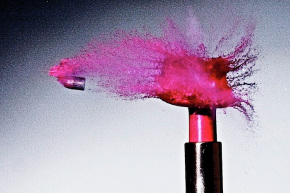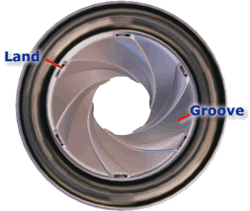What is Forensic Ballistics?
According to the U.S. Army, ballistics is "the branch of applied physics that studies the motion of missiles or projectiles of all types and the study of conditions that influence that motion." In basic terms, it is the study of firearms and ammunition. It is applied to forensics because it is known as a legal matter.
How It's Used:
Forensic Ballistics is used to anaylyze fired bullets and their casings and to trace them back to the gun they were fired from. This can help solve many crimes and murders that forensic pathologists come across.
How It Works:
Forensic Ballistics is used to pair a discharged bullet with its gun. When the trigger of a gun is pulled, a firing pin strikes the primer of a bullet which sets off the gunpowder. When this happens, the bullet has to leave the area and the only way to go is out. During this process marks are left on the shell casing as well as on the ejected bullet. These marks are specifc to that gun and are used to match the gun to the bullet.
A gun can also be traced by its serial number. When a serial number is used, it can usually be traced to the owner.
A gun can also be traced by its serial number. When a serial number is used, it can usually be traced to the owner.
Rifling
When a rifle or pistol is made, the manufacturer puts intricate grooves inside the barrel. This allows the bullet that is ejected from the from the barrel to spin along with the grooves and travel in a more direct and straight pattern. When a gun is rifled, this leaves specific markings on the ejected bullet which is unique to that specific gun. If a bullet is found, the markings on the bullet can be used to match it back to the original firearm that it was fired from, which can then match it to the gun's owner.
Firearm Uniqueness
No two firearms are exactly alike. They also make a specific pattern on the cartridge casing as well as the ejected bullets. According to FirearmsID, the recovered bullets and casings can be recovered months or even years later and still be identified back to the original firearm. The firearm also will not change over time, therefore the first and last bullets fired from a gun (no matter how far apart they may be), will be comparable, which is often called a "Mechanical Fingerprint."
Firearm Identification
Once a bullet or cartridge casing is found it is searched through a computer database called the IBIS (Integrated Ballistics Identificaion System.) This system has recorded pictures of the bullets and casings, which when a bullet or casing is searched in the system it can match it to another very quickly. This then can be matched to a specific firearm. After it is matched, a forensic investigator will try to match the found bullet to a firearm most likely purchased or obtained by the main suspect. Once it is matched, a warrant is obtained and an arrest is made.
The Physics
There are many things that go into effect when a bullet is fired. The energy balance is of these, the ammounts break down like this:
- Projectile motion 32%
- Barrel friction 2%
- Hot gases 34%
- Barrel heat 30%
- Unburned propellant 1%.
All of this will transfer to physics with Newton's 3rd Law: For every action, there is an equal and an opposite reaction. When you consider the mass of the shooter and the firearm (M) and the mass of the bullet (m), these two objects move away from one another, which creates a new velocity. This is shown as the velocity of the shooter and firearm (V) and the velocity of the bullet (v). Based on Newton's 3rd Law of Motion, these two must be equal, so MV+mv=0. Click Here to look at a video of a real firearm being shot in slow motion!
Page by Maddie Grant


